Protecting and restoring Ann Arbor's natural areas and fostering an environmental ethic among its citizens.
Volume 25, Number 2
Summer 2020
Park Focus: Ruthven Nature Area
Meija Knafl, Park Steward Coordinator
Among the grand oaks for which Ann Arbor is named there are treasures. The public parks of our bustling town, enriching the lives of residents and visitors alike, nestle themselves amongst quiet neighborhoods and along busy roadsides. Some are obvious to behold, others are diamonds in the rough, and each has its own story to tell. One of the longest running stories to be heard can be found in a place called Ruthven Nature Area.
There is no permanent signage to indicate the location of the park, but if you'd like to enjoy this hidden gem there is an easy way to get there. You can cross at the corner of Geddes Avenue and Huron Parkway heading north from the Gallup Park Boat Launch entrance and you will find the entrance to Ruthven Nature Area. Upon entry you leave behind a bustling world of park-going cyclists, busy lanes of come-and-go traffic, and lively stand up paddle board launches to enter an ancient moment captured in time.
One of the very first sights your eyes meet once you slip through the tangled limbs of roadside shrubbery is the large hill that dominates the skyline ahead of you. This unique hill first began to form nearly 2 million years ago. As the icy fists of glaciers from the Laurentide Ice Sheet slammed into this area, they ground and tore through everything in their path, creating a 2-mile-thick mixing pot of sediment. When at last these vast forces gave their final tired sigh and retreated north, about 10,000 years ago, the thick ice melted away left behind great piles of gravel, known as kames, to dot the landscape.
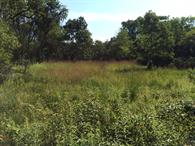 After that, much of the land became covered in prairie grasses like you find here. Big bluestem and little bluestem are foremost among the giant golden prairie grasses, but you'll soon notice that they are peppered with the dark, withered sentinels of round-headed bush clover and the fragrant seed heads of last year's beebalm. Once this vast ecosystem type stretched over 200 million acres from Ohio to Nebraska, but less than 1% of our prairie remains today, much of it in isolated pockets like Ruthven.
After that, much of the land became covered in prairie grasses like you find here. Big bluestem and little bluestem are foremost among the giant golden prairie grasses, but you'll soon notice that they are peppered with the dark, withered sentinels of round-headed bush clover and the fragrant seed heads of last year's beebalm. Once this vast ecosystem type stretched over 200 million acres from Ohio to Nebraska, but less than 1% of our prairie remains today, much of it in isolated pockets like Ruthven.
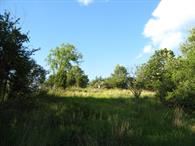 Recently, Ruthven Nature Area received an addition. If you continue down from the crest of the hill, around the back, you'll descend a dusty trail sometimes blown into obscurity by red and black oak leaves. Further down still, and the pale leaves become ruddier, darker, and wetter. Commonly found adjacent to the tall kame is a low region called a kettle, where chunks of glacial ice broke away and created a depression on the landscape.
Recently, Ruthven Nature Area received an addition. If you continue down from the crest of the hill, around the back, you'll descend a dusty trail sometimes blown into obscurity by red and black oak leaves. Further down still, and the pale leaves become ruddier, darker, and wetter. Commonly found adjacent to the tall kame is a low region called a kettle, where chunks of glacial ice broke away and created a depression on the landscape.
In this new part of the park tea-like water reflects the red of dogwood and the yellow of willow shrubs. From beneath the surface, eruptions of purple skunk cabbage are growing even more with every spring day that passes. This new parcel is already showing signs of use, from the birds overhead to the latticework of game trails where the muddy prints of deer meander like the nearby stream. There are no official trails for people yet, and it will certainly be a task to create one among the wet puddles that wander and pitch among mounds of moss and tufts of grass.
The story of Ruthven is ancient, but it is also ongoing. Invasive species threaten this site, pushing out native species and eliminating habitat for wildlife. If you would like to contribute to the story of Ruthven Nature Area, consider coming out and helping manage these harmful incursions by attending a public workday!
Coordinator's Corner: A Refuge in the Storm...
Well, much has happened in the world since our last newsletter. First a pandemic, with all its associated challenges, sufferings, and losses. And then a global outcry about long-standing racial injustice. It's been a difficult spring for so many, especially those who were already facing challenging times. Many people are hurting. If you are one of them, my heart goes out to you. All of us at NAP look forward to a time when life becomes less challenging for everyone.
NAP staff have spent much of the spring working from home, like many others who are fortunate enough to have this option. As circumstances allow, we've resumed field activities, following all the safety protocols. In the early days of the “Stay Home" order, my outdoor activities were limited to places I could walk to. That was a big change for me. Between burn season and birding, I usually get around to a wide range of natural areas in the spring, in and out of the city. But this year, most of my wandering was within a 2-mile radius of my house.
Fortunately, even that relatively limited expanse afforded me an unexpected variety of natural areas to visit, and to explore. Yes, it turns out I still had quite a bit of exploring to do in my own “back yard." Places I had simply driven past for years have now become more familiar, more intimate, more appreciated parts of my life as I've gotten to know them better. Like many, I am often lured away to higher-profile, and further-away destinations. I trade-in an intimate knowledge of my backyard for a more superficial familiarity with the faraway.
Take birding, for example. Most of the past 25 springs have included at least one trip to Canada's Pt. Pelee or Ohio's Magee Marsh to enjoy the migration at these hotspots. But not this year. So, in response to my family now working from home offices, I put up some bird feeders - eleven bird feeders in fact, and three bird baths. I already owned most of them and had always intended to put them back up when we moved into this house a couple years ago. Now I finally had the motivation, and the time, to do so.
And what fun we have had watching the parade of visitors to our backyard – not just the birds, for whom the feeders were intended, but also the squirrels, who have amazed us with their cleverness and impressed us with their perseverance. We've had the opportunity to really observe all these creatures up close, much closer than we usually do.
These moments of deeper-than-usual connection with nature, whether through a hand lens, or a pair of binoculars, or one of my other senses, have been a source of great comfort during this challenging spring. I hope that you too have been able to find ways to connect with the natural world around you during these tough times. And I hope you'll continue to make time do so, even when everyday life becomes a little less challenging for all of us.
-David Borneman, Natural Area Preservation Manager
Keeping Our Ecosystems Healthy with Integrative Pest Management
Michael Hahn, Stewardship Specialist
Integrated pest management, or IPM, is a long-term pest management system that uses all suitable techniques for the prevention or suppression of pests that are harmful to the health, function or aesthetics of City-owned landscapes. These are done in a safe, effective and environmentally friendly manner. This can often be accomplished through accurate pest identification, monitoring for presence and impact, applying appropriate action thresholds and making habitat less desirable with the use of mechanical, cultural, physical or biological control techniques. If these are ineffective, only then may we consider the application of an appropriate pesticide.
The term “pest" can vary in a lot of different ways. I first think of invasive weeds as the primary pest, though pests can include problem insects, rodents, nematodes, plant diseases, or microorganisms that are detrimental to the health of the parks and facilities. Keep in mind that our intention is not to remove every single pest organism, but to reduce the damage they cause by reducing them to an acceptable threshold. Here are the steps we go through before we ever considering applying herbicide to the land.
Keeping ecosystems healthy is one of the first steps to our IPM process. The old saying “An ounce of prevention is worth a pound of cure" holds true in nature areas too. Preventing new populations of
weeds from getting established is an easy and efficient approach to accomplish this. We do this by working in the highest quality habitats within our parks first. If possible, we'll address those infestations of invasive plants with mechanical control techniques. We try pulling, cutting or controlled burning first. Hand-pulling is very effective for some invasive species, like garlic mustard, but it's not effective for others, especially rhizomatous species like phragmites and other invasive grasses.
If you've been around NAP long enough, you've probably heard us speak highly of controlled fire. I would consider fire to be both a mechanical control and a cultural control. Native Americans have been living on the landscape since the last glacier, and fire was a tool they used for a lot of different applications, so much so that some of our native plants are now dependent on that flame for flowering, creating viable seed or even allowing seeds to germinate.
Physical barriers are another technique we consider when looking to control invasive weeds. A couple of years ago, NAP tried Buckthorn Baggies as a physical control to kill invasive shrubs in Scarlett Michell Nature Area. We, zip-tied the baggies around a 6-inch-tall cut stump, making sure to flare the open end of the baggie out at the base of the stump.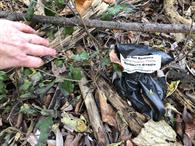 Over the course of one, or ideally two growing seasons, the Buckthorn Baggie stops the shrub from photosynthesizing, eventually killing it. We've had a success rate of 75% with these bags. The times they didn't work were when the bag had a hole in it, or if the open end of the bag didn't stay flared out, allowing new shoots to leaf out of the bag. While this is an effective technique, there are a few drawbacks that make it unsuitable for some situations in our nature areas, but it might work perfectly in your backyard.
Over the course of one, or ideally two growing seasons, the Buckthorn Baggie stops the shrub from photosynthesizing, eventually killing it. We've had a success rate of 75% with these bags. The times they didn't work were when the bag had a hole in it, or if the open end of the bag didn't stay flared out, allowing new shoots to leaf out of the bag. While this is an effective technique, there are a few drawbacks that make it unsuitable for some situations in our nature areas, but it might work perfectly in your backyard.
Leaves are the favorite part of the purple loosestrife plant for Galerucella beetles. They love eating it and will starve rather than eat any other plant. These beetles were released as a biological control to stop loosestrife from completely taking over our wetlands not too long ago. The next time you see a purple loosestrife plant, take a look and see if you can find these hungry little guys at work munching away! Another example of a biological control is Bacillus thuringensis ,or BT, used to control gypsy moths. Tina Stephens, NAP Volunteer and Outreach Coordinator wrote a great newsletter article in the 2017 Autumn edition about the control of gypsy moths using BT. I'd encourage you to check it out if you'd like to know more!
After all of that, if non-chemical control options fail to bring pest levels down to a tolerable threshold, we will only then consider using herbicides. When we must use an herbicide, we are committed to using the least toxic, lowest percentage of 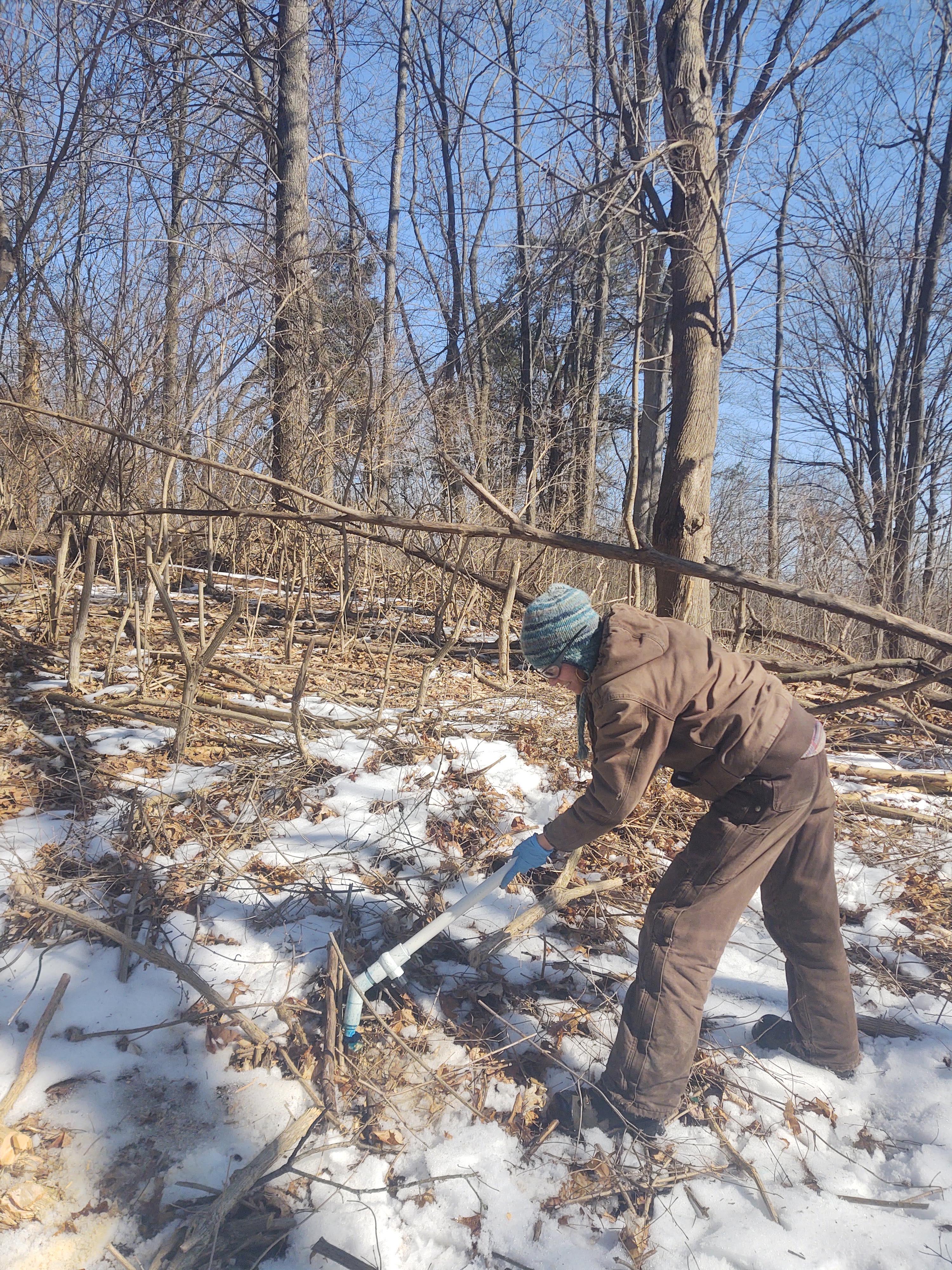 active ingredient and the most conservative application that will achieve the desired results. Evaluation and reevaluation are the final, critical step to ensure the pest is being controlled adequately, that there are no negative impacts to non-target species, and to determine if a follow-up treatment is required. IPM is an important tool that helps to keep our parks safe and beautiful and our nature areas healthy and diverse. Questions? Contact NAP at [email protected] or 734.794.6627.
active ingredient and the most conservative application that will achieve the desired results. Evaluation and reevaluation are the final, critical step to ensure the pest is being controlled adequately, that there are no negative impacts to non-target species, and to determine if a follow-up treatment is required. IPM is an important tool that helps to keep our parks safe and beautiful and our nature areas healthy and diverse. Questions? Contact NAP at [email protected] or 734.794.6627.
Mayor's Message on Equity
City of Ann Arbor Mayor Christopher Taylor's June 1st video message addresses the “physical, economic, political, (and) cultural degradation of black and brown people and other people of color" as something we cannot be blind to. “We cannot survive in the presence of this injustice. It simply has to stop and we are the ones to stop it." Please see the Mayor's statement here: https://youtu.be/OPWp6N848uc
NAPenings
Many thanks to the groups who volunteered with NAP recently. We could not make such a difference without you!
Duo Security
EMU Beta Alpha Psi
EMU VISION
Huron High School's English Reading Class
Spartan Sierra Club
UM Lambda Theta Alpha
UM Society of Wetland Scientists
Trumpeter spotted from afar at NAP HQ
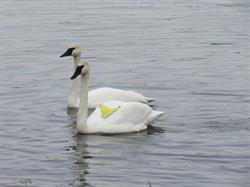
NAP spotted a yellow-wing-tagged Trumpeter Swan, with the code K10 , on South Pond at NAP HQ in February. We learned that this female Trumpeter was banded as an adult in 2013 in Scarborough, Ontario Canada, making her at least 9 years old. Trumpeter Swans are a legally protected threatened species in Michigan, having been reintroduced in the 1990's into our state. They often nest in Oakwoods Nature Area and other small ponds in our region. You can tell a Trumpeter from the invasive Mute Swan, because Trumpeters have large sloping black bills. Mutes have orange bills with a black nob.
Staff Updates
Farewell...
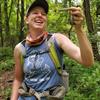
Trish Brockman, Conservation Worker: The few months I worked with NAP have been some of the most enjoyable months of my life. I learned how to use a chainsaw, helped with prescribed burns, restored some of Ann Arbors' green spaces, and got to know and work with some pretty amazing people. I am excited for my next big adventure as a graduate student studying turtles and birds at MSU, but I will always treasure the community I found at NAP.

Matt Connors, Conservation Worker: After a great season of work, I've decided to transition towards natural and edible landscaping. I had a great time working with the NAP staff and I'll miss the summer days singing in the field with the crew. I also had a blast working with the groups of enthusiastic volunteers. I'll be sure to carry the skills, knowledge, and values I gained at NAP moving forward.
.jpg?RenditionID=1)
Josh Doyle, Conservation Worker: My employment at NAP has come to a close but my time as a part of the crew has been filled with valuable experiences and joy. Working with such a great group of people has truly been a highlight of my career. The edification and sense of camaraderie I received while doing things I am passionate about will stay with me as I navigate my future. Thank you everyone at NAP and all of the volunteers for building such a great community around conservation in a city we all love.
Hart Davis, Conservation Worker: I have ha d a blast working for NAP the last year and a half. It has been a fantastic experience and I have learned a lot along the way! Thank you to all the staff and volunteers for making my time here so enjoyable. I am excited for the new challenge of working as an environmental scientist in Wisconsin!
d a blast working for NAP the last year and a half. It has been a fantastic experience and I have learned a lot along the way! Thank you to all the staff and volunteers for making my time here so enjoyable. I am excited for the new challenge of working as an environmental scientist in Wisconsin!

Nick Scobel, Conservation Worker: Though my time with NAP has been short, it's given me a wealth of new skills and knowledge I didn't have before. Between invasive species removal and prescribed fire, I've found a great appreciation for the work that NAP does to restore and maintain our local natural areas. I've accepted a biologist job with USDA APHIS Wildlife Services working to mitigate wildlife conflict at Detroit Metro Airport. I'm excited for this new chapter in my professional life, but look forward to volunteering with NAP when I can in the future. Thank you for a great winter field season!
Changes at NAP and in Our Parks
Hannah Bradshaw, Outreach Assistant
Nature is always open to us for reflection, recreation, and relaxation. Here at NAP, we have missed working with you in our parks, but we hope that you've still found time to spend outdoors. See the infographic below for some guidelines on how to enjoy our parks safely during this time. If you're stopping to enjoy the birds, wildflowers, or just the beautiful weather – watch your footing, try not to trample vegetation, and carefully move 6 feet off the trail to allow other park users to pass at a safe distance. While running or jogging, be mindful of blind corners and announce yourself with a friendly hello when approaching trail users that are moving slower than you.
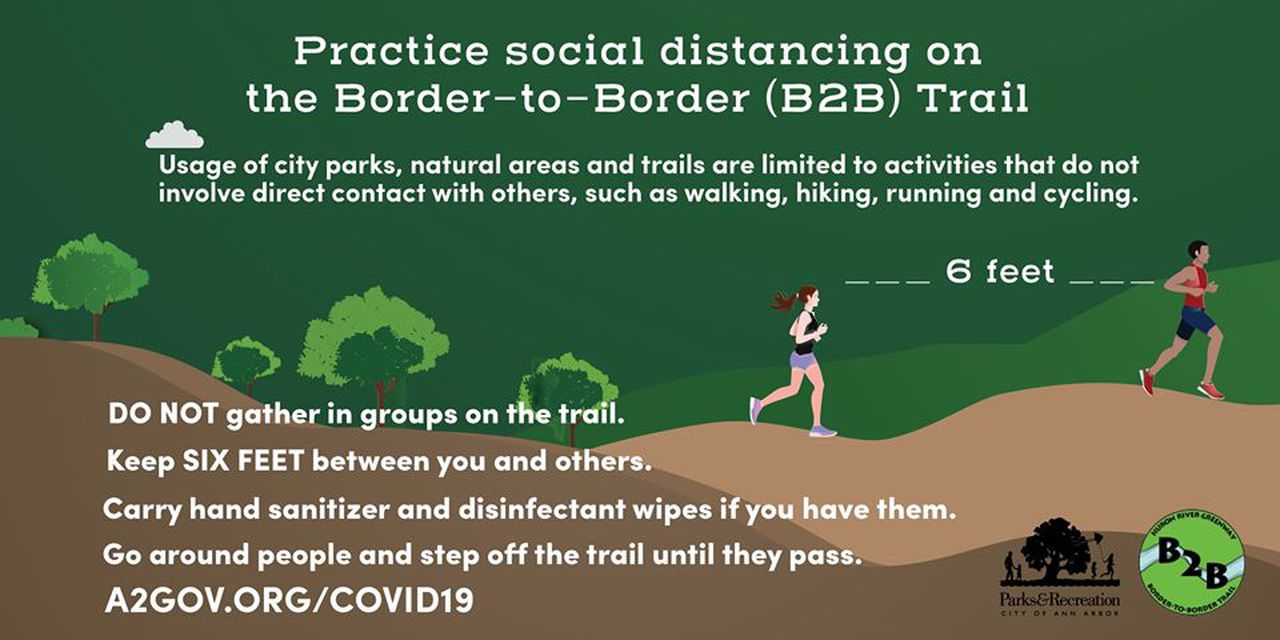
You may notice something different in this issue of our newsletter. Our calendar of events is absent! Due to uncertainty surrounding when we could host workdays again or how we would need to change them, we decided not to include event information in this edition of the newsletter. NAP is closely monitoring the COVID-19 situation and working to modify our events in a safe and responsible manner. Please visit www.a2gov.org/NAPevents for the most up to date information about our volunteer opportunities, The Stewardship Network's Stewards' Circles, and other ways to stay involved!
